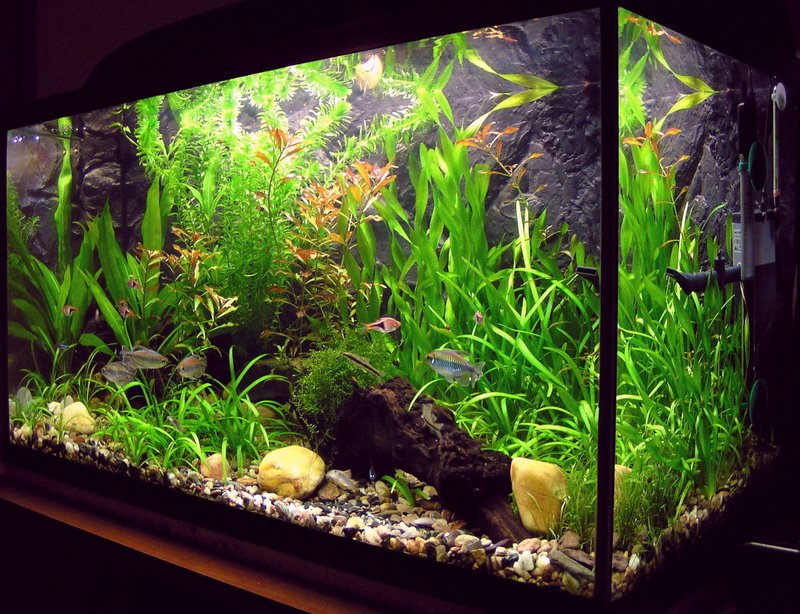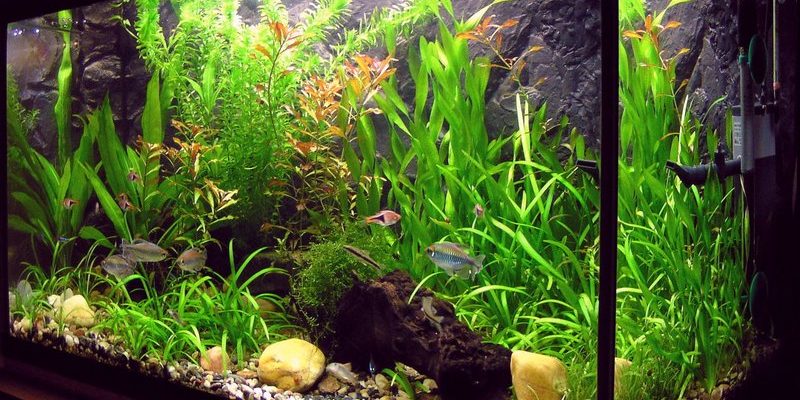
In this guide, we’ll walk through some of the most frequent errors new aquarists make. Think of it like sitting down with a friend who’s been through it all. You’ll get insights that can save you time, money, and maybe even a few fish! Let’s explore how to make your aquarium not just a glass box but a flourishing ecosystem.
1. Skipping the Cycling Process
One of the biggest mistakes new aquarists make is skipping the cycling process. If you think of your aquarium as a brand-new house, cycling is like setting up the plumbing. Without it, things can get messy fast. Cycling helps to establish beneficial bacteria in your tank, which break down harmful waste products like ammonia and nitrites—a crucial part of keeping your fish healthy.
So, what does cycling involve? Essentially, it’s about creating a balance. You want to add a source of ammonia (like fish food or pure ammonia) to kick off the nitrogen cycle. Over time, beneficial bacteria will grow, turning that ammonia into less harmful substances. This process can take anywhere from a few weeks to a couple of months. Be patient! Rushing this step can lead to fish stress or even loss.
Here’s a quick overview of the cycling process:
- Fishless Cycling: Use ammonia to start the process without adding fish too soon.
- Monitoring: Test your water regularly with a test kit to keep track of ammonia, nitrite, and nitrate levels.
- Patience is Key: Allow enough time for the bacteria to establish before adding any fish.
2. Overloading the Tank Too Quickly
Another common mistake is overloading the tank with too many fish at once. Picture this: you’ve just set up a cozy little home for your new aquatic friends, and suddenly you want to fill it to the brim. But here’s why that’s not a great idea. Your tank needs time to adjust after adding new fish. Adding too many at once can lead to a spike in ammonia and nitrite levels—big no-nos for your fish’s health.
It’s better to introduce fish gradually. You might be wondering how many fish your tank can handle. A good rule of thumb is the one-inch-per-gallon guideline. For example, if you have a 20-gallon tank, you can safely add about 20 inches of fish (considering their adult size). This method allows your aquarium’s ecosystem to adjust and keep the water chemistry stable.
Here’s a simple plan for stocking your tank:
- Start Slow: Begin with a few fish and wait a couple of weeks before adding more.
- Observe: Keep an eye on your fish and water parameters after new additions.
- Keep Records: Write down what fish you add and when for easy tracking.
3. Poor Water Quality Management
Water quality is like the lifeblood of your aquarium. If it’s bad, everything suffers—fish health, plant life, and overall beauty. New aquarists often underestimate the importance of regular testing and maintenance. You wouldn’t drink dirty water, right? Your fish feel the same way!
To keep your aquarium’s water clean and safe, invest in a good water test kit. You should check for ammonia, nitrites, nitrates, pH, and even hardness. Here’s what you need to do:
- Regular Testing: Test your water at least once a week, especially after adding new fish.
- Water Changes: Regularly change 10-20% of your tank water weekly to remove toxins.
- Use Conditioners: Always treat tap water with a dechlorinator before adding it to your tank.
By staying diligent about water quality, you’ll create a healthier environment for your fish.
4. Ignoring Equipment Needs
When you start an aquarium, it’s easy to focus on the fish and decorations and overlook the actual equipment. Think of your tank like a car; you need the right tools to keep everything running smoothly. Invest in a quality filter, heater, and lighting system suitable for your fish and plants.
Each piece of equipment serves a purpose. A filter keeps the water clean, a heater ensures a stable temperature, and proper lighting promotes plant growth. Take the time to research what’s necessary for your specific setup. Here are a few tips:
- Filter Type: Choose a filter that can handle the size of your tank; consider hang-on-back or canister filters depending on your needs.
- Heater Placement: Make sure your heater is placed correctly for even heating across the tank.
- Lighting Duration: Fish and plants usually need about 8-12 hours of light a day, so set a timer for consistency.
By investing in the right equipment and understanding its function, you’ll set your aquarium up for success.
5. Not Researching Fish Compatibility
You might be tempted to pick out fish that are bright and beautiful, but compatibility is crucial. Not every fish plays well with others. Just like a dinner party, you wouldn’t invite guests who are likely to clash. Some fish are territorial, while others may become stressed in the presence of certain species.
Before adding fish, do your homework. Research not only individual species but also their behaviors and environmental needs. Here are some tips to ensure a harmonious community tank:
- Choose Community-Friendly Species: Look for fish that are known to coexist peacefully.
- Group Size: Some fish prefer to be in schools, so consider their social needs.
- Size Matters: Be cautious of adding smaller fish to a tank with larger, predatory species.
By understanding fish compatibility, you’ll create a peaceful and lively environment.
6. Neglecting Plants and Decor
You might think plants and decor are just for looks, but they serve vital roles in your tank. Plants help with oxygenation and provide hiding spots for shy fish. Plus, they can absorb harmful substances, helping keep the water cleaner. Neglecting them can lead to an unbalanced environment and stressed fish.
Consider incorporating live plants; they can enhance the beauty of your aquarium and promote a more natural habitat. Here’s what to keep in mind:
- Plant Selection: Choose plants that thrive in your tank’s lighting and water conditions.
- Decor Considerations: Ensure your decorations are fish-safe and won’t leach harmful substances into the water.
- Regular Maintenance: Trim dead leaves and clean your decor to prevent algae growth.
By adding plants and thoughtful decor, you’ll create an inviting and healthy environment for both your fish and yourself.
7. Forgetting About Regular Maintenance
Once everything is set up, it’s easy to assume your job is done, but that’s just the beginning. Regular maintenance is crucial for the long-term success of your aquarium. Just like a garden, your tank requires attention to flourish.
Set a schedule for maintenance tasks. Here’s a breakdown of what to regularly check and do:
- Weekly: Test water parameters and perform partial water changes.
- Monthly: Clean the filter (following the manufacturer’s instructions) and check for any equipment issues.
- Seasonally: Replace light bulbs and deep clean decor or substrate as needed.
Creating a routine will help you stay on top of things and ensure a thriving aquatic environment.
8. Failing to Seek Help or Resources
Lastly, one of the most significant mistakes new aquarists make is thinking they have to go it alone. The aquarium community is vast and supportive. Online forums, local clubs, and even your local fish store can offer valuable advice, tips, and resources. Don’t hesitate to ask questions!
Here’s how to tap into these resources:
- Online Communities: Join forums or social media groups focused on aquarists where you can share experiences and ask for help.
- Local Fish Stores: Don’t be afraid to consult with the staff—they often have a wealth of knowledge.
- Books and Articles: Consider reading books or articles by experienced aquarists to expand your knowledge base.
Reaching out for help can provide insights that make your journey smoother and more enjoyable.
Setting up and maintaining an aquarium can be one of the most rewarding hobbies. It’s a labor of love that invites you into a vibrant underwater world. By avoiding these common mistakes and taking the time to learn and understand your aquarium, you’ll be well on your way to creating a thriving environment for your fish. Remember, patience and preparation are key. So, keep your eyes open, ask questions, and enjoy every moment of this beautiful journey!

